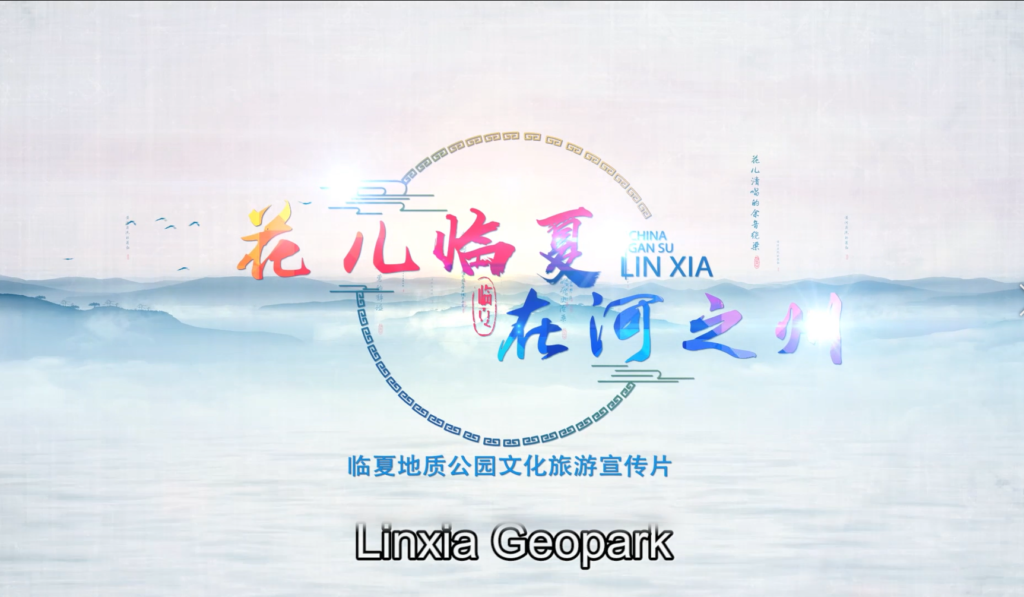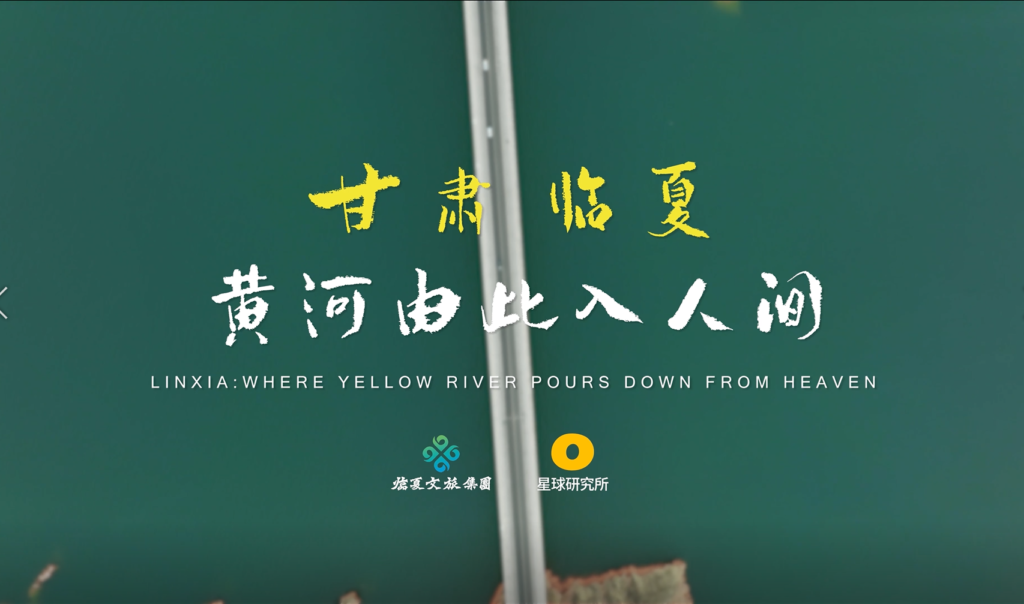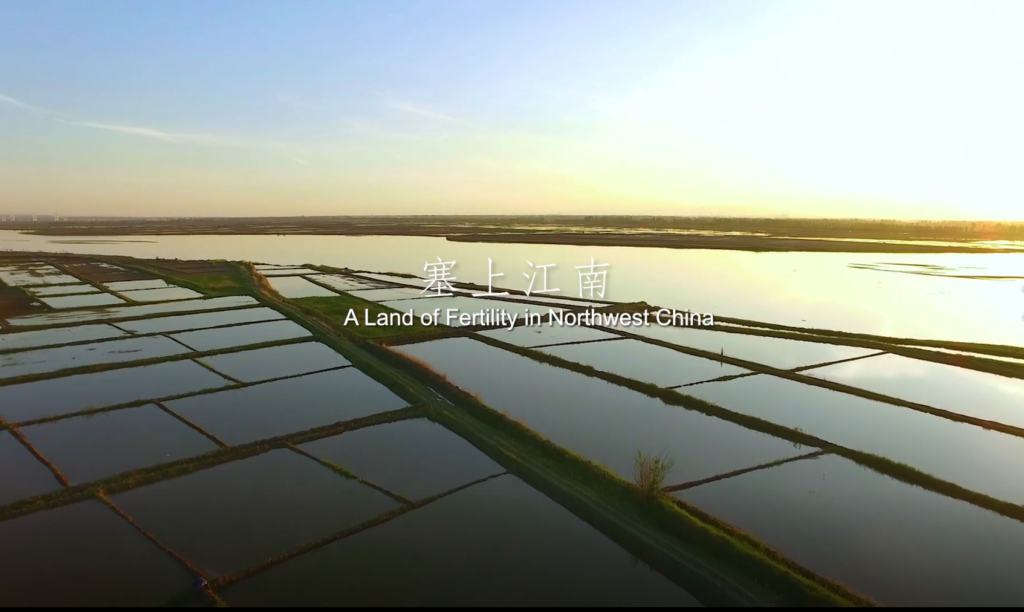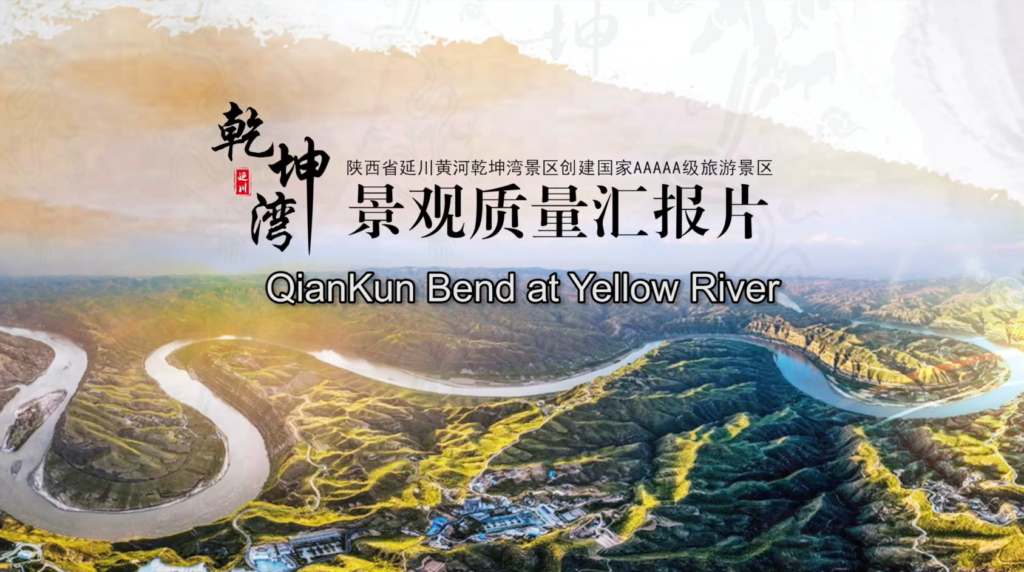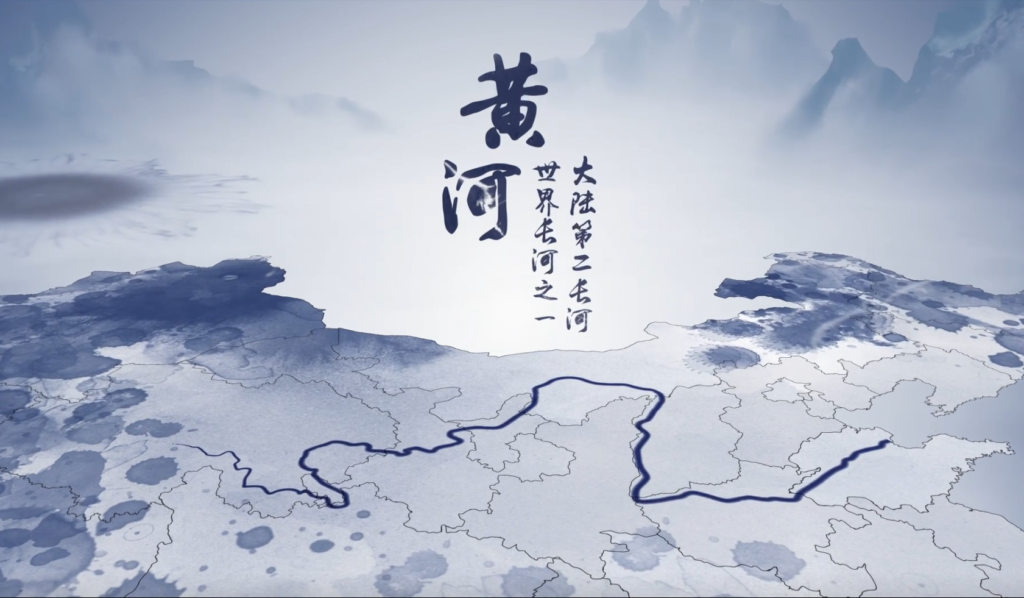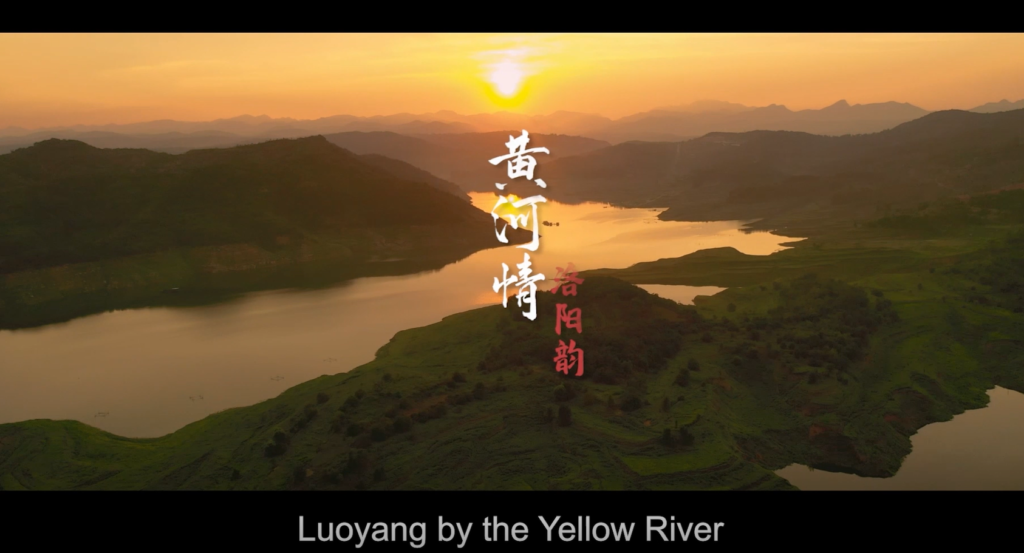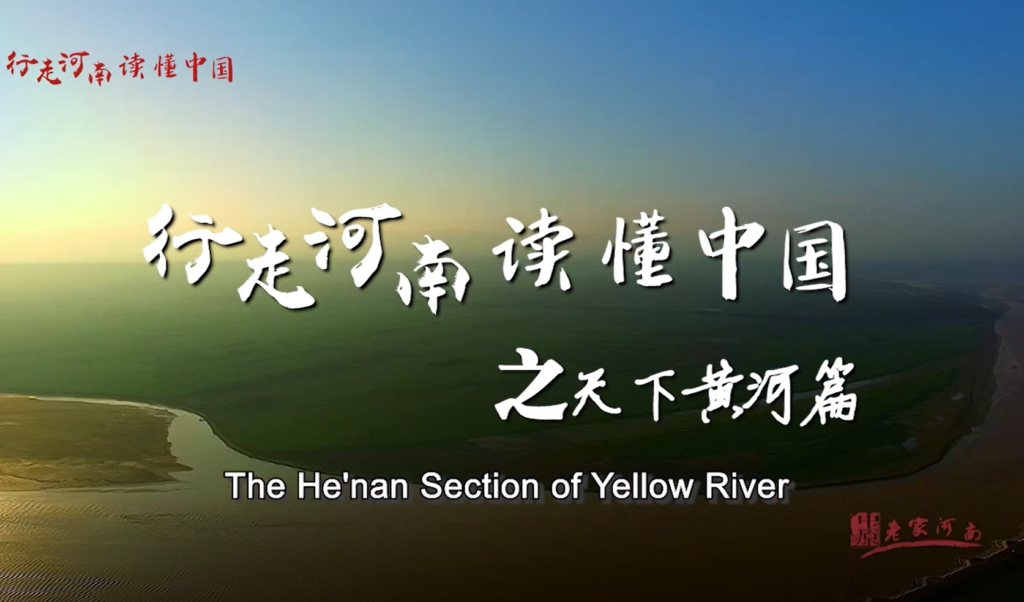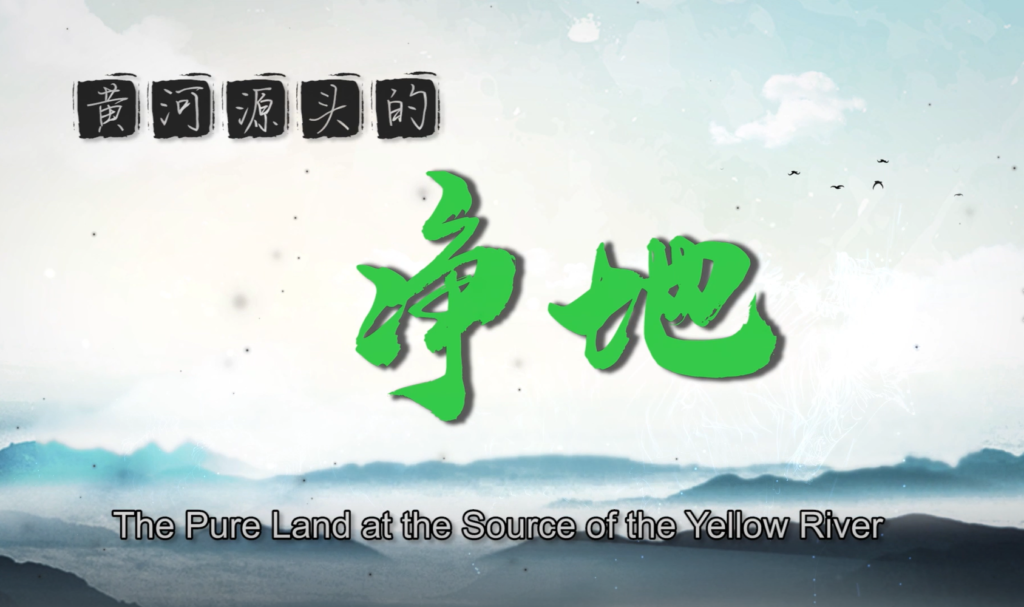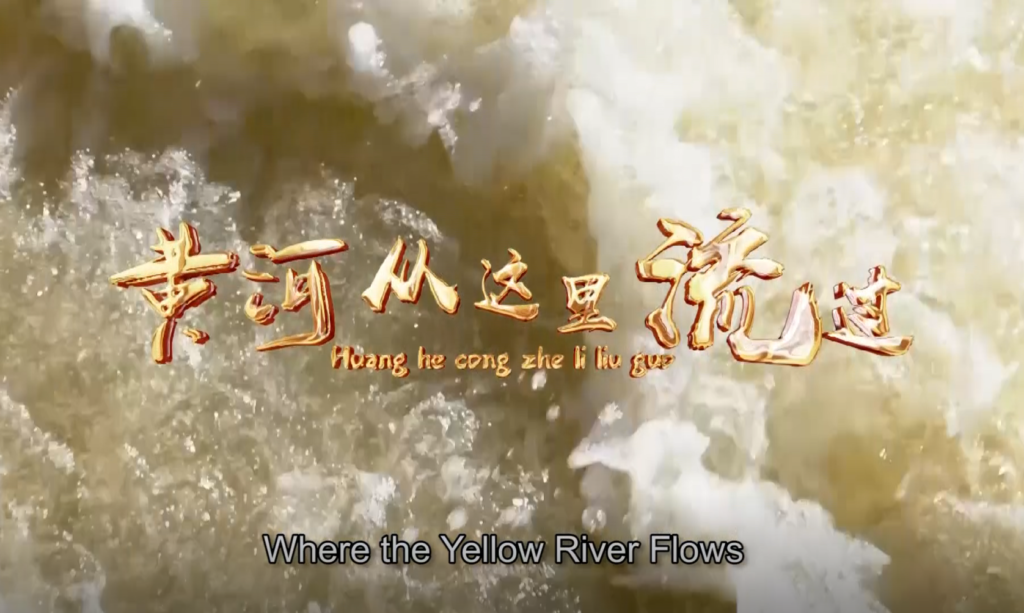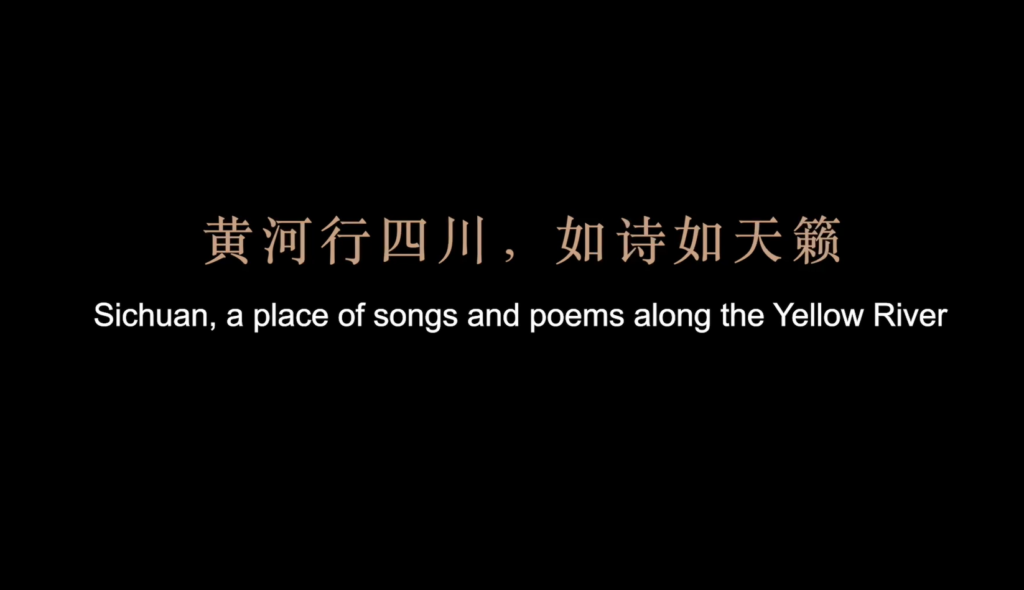01 九月 【2022年「海外中國旅遊文化周」】「黃河文化」系列介紹
【2022年「海外中國旅遊文化周」活動視頻上線,歡迎流覽、分享!】
黃河文化.甘肅《臨夏地質公園》
在黃河的上游,在黃土高原和青藏高原交匯地帶,有一片古老而神奇的土地——臨夏地質公園。臨夏地質公園位於甘肅省臨夏州境內,是以白堊紀恐龍足印和晚新生代古動物群為突出代表,以晚新生代地層、北方丹霞地貌和黃河三峽景觀為重要補充,並融合當地特色少數民族文化,集地質、生態、文化為一體,沒有圍牆的綜合型地質公園。這裡蘊藏著豐富的古動物化石,其中和政羊化石、三趾馬化石、鏟齒象化石、披毛犀化石、埃氏馬化石、巨鬣狗化石佔據六項世界之最!這裡有聞名於世的世界文化遺產——炳靈寺石窟,還有獨特的炳靈丹霞景觀,還有沉睡千年的彩陶。
In the upper reaches of the Yellow River where the Loess Plateau is intersected with Qinghai-Tibet Plateau, there is an ancient and magical land – Linxia Geopark. Located in Linxia Prefecture, Gansu Province, Linxia Geopark is a comprehensive geopark without enclosures, an embodiment of local characteristics of minority cultures, and a combination of geology, ecology and culture. It is characterized by Cretaceous dinosaur footprints and Late Cenozoic paleofauna, and highlighted by Late Cenozoic strata, northern Danxia landform and the landscape of the Three Gorges of the Yellow River. The park is also abundant in ancient animal fossils, among which the fossils of six species, namely hezhengia, hipparion, platybelodon, coelodonta antiquitatis, equus eisenmannae and dinocrocuta gigantea rank first in the world! There are the world-renowned world cultural heritage – Bingling Temple Grottoes, the unique Bingling Danxia landscape, and the colorful pottery that has been lying there for thousands of years.
黃河文化.甘肅《黃河由此入人間》
黃河進入黃土高原的第一站——甘肅省臨夏回族自治州。臨夏的總面積8169平方公里,僅占甘肅總面積的1.92%,但在臨夏卻擁有豐富迥異的風景。臨夏地處兩級階梯的交界帶,整個地形猶如一個傾斜的盆地,海拔落差將近三千米,地表分佈著163座較大山嶺和10823條大小溝穀。既有西北大地的粗獷豪邁,又有秦嶺餘脈的山清水秀,還有青藏邊緣的嶙峋冷峭。這片古老的土地上有著恐龍繁衍生息的足跡,也有著歎為觀止的文化遺跡,千百年來,多元的文化在這片土地上交融、碰撞。
The first stop that receives the Yellow River on the Loess Plateau is Linxia Hui Autonomous Prefecture in Gansu Province. Linxia covers a total area of 8,169 square kilometers, accounting for only 1.92% of the total area of Gansu, but is bestowed with a wealth of widely different landscapes. Standing at the junction of two steps, Linxia appears as a sloping basin in the whole, with the drop in elevation of nearly 3,000 meters, and is dotted by 163 large mountain ranges and 10,823 large or small valleys. It is unconstrained as the northwestern land, picturesque as the ranges of Qinling Mountains, and precipitous as the edge of Qinghai-Tibet. This is an ancient land where dinosaurs ever lived and multiplied, and where breathtaking cultural relics are well preserved. For thousands of years, this land remained a witness to the mingling and collision of multiple cultures.
黃河文化.寧夏《流動的藝術》
在黃河邊上生長著一座美術館——銀川當代美食館,它不僅可以展示藝術作品,本身也是一部作品,美術館的外觀來源於黃河水流,表現黃河水向前流動的狀態。生長在黃河邊的藝術家們將黃河力量和個人激情結合在一起,捕捉黃河邊人民生活中的場景,做成雕塑或畫卷。生生不息的黃河,哺育了兩岸人民的精神世界,為黃河邊的藝術提供了智慧和靈感。今天關於黃河的藝術創作層出不窮,生長在黃河邊的藝術家們依然在黃河的滋養下汲取著創作的養分,也用生命的力量講述著有溫度的黃河故事。
Near the Yellow River, there stands an art museum – the Museum of Contemporary Art of Yinchuan. It displays artworks and is also an artistic work in itself. The appearance of the museum is inspired by the flow of the Yellow River, showing its forward flowing state. The artists growing up by the Yellow River, combing the power of the Yellow River with their personal passion, captured the scenes of people living along the Yellow River and made them into sculptures or paintings. The everlasting Yellow River nurtures the people on both banks spiritually and brings wisdom and inspiration for the art blooming on its banks. Today, the artists growing up by the Yellow River remain inspired by it, vigorously tell touching stories of the Yellow River, and produce endless artistic creations about the Yellow River.
黃河文化.寧夏《塞上江南》
黃河之水自昆侖東北,滔滔流出,在臨近「幾」字的形的彎道處與寧夏平原相遇,黃河流經九省區,寧夏是唯一全境屬於黃河流域的省份。南部,是黃河支流清水河 ,滋養的鬱鬱森林;北部,是黃河早就的魚米之鄉,華夏文明循著黃河水貫穿寧夏平原。寧夏平原南高北低形成適度坡降,黃河流過,睿智的古人,利用山與河的優勢在這裡修渠引水,秦渠、漢渠作為世界上最古老的水渠,開啟了寧夏平原無壩引水的歷史!如今的寧夏,黃河水卷起新時代的浪潮,成為全國穩產高產的商品糧基地和旱澇保收的西北糧倉。
The Yellow River rolls from the northeast of Kunlun Mountains and meets the Ningxia Plain at a bend in the shape of the Chinese character “几”. The Yellow River flows through nine provinces among which, Ningxia is the only one that is entirely within the Yellow River Basin. In the south, it’s a tributary of the Yellow River – Qingshui River that nourishes lush forests; in the north, it’s a land of fish and rice created by the Yellow River. The Chinese civilization flourishes across the Ningxia Plain in reliance on the flowing Yellow River. Ningxia Plain is high in the south and low in the north, forming a moderate slope for the Yellow River to flow through, and taking such advantage of mountains and rivers, wise ancient people built canals to divert water, such as Qinqu Canal and Hanqu Canal, which as the world’s oldest canals, opened the history of Ningxia Plain to divert water without dams! Today, Ningxia, nurtured by the Yellow River water, has become a national stable and high-yielding base of marketable grain and a stable granary in the northwest.
黃河文化.陝西《黃河乾坤灣》
黃河自青藏高原而出,一路裂地而來,在秦晉峽谷延川段蜿蜒曲折,形成連續5個S型大轉彎,猶如一條巨龍奔騰不息,這就是聞名遐邇的世界地質奇觀——黃河蛇曲地貌群。其中以乾坤灣最為雄渾壯觀,乾坤灣彎度達320度,形似太極,被譽為天下黃河第一灣。黃河乾坤灣景區,位於陝西省延川縣乾坤灣鎮的黃河西岸,是黃河蛇曲國家地質公園的核心片區,面積27.4平方公里。景區旅遊資源類型豐富,主題特色鮮明,其中乾坤灣,清水灣、會峰寨、黃河峽谷劉家山毛澤東舊居等,碾畔古村落等資源單體結構完整,觀賞遊憩和使用價值極高,歷史文化和科學藝術價值獨特!
Starting from the Tibetan Plateau, the Yellow River forges all the way forward and twists at the Qinjin Canyon Yanchuan section, forming five continuous S-shaped bends, like a dragon rolling ahead, which is the well-known geological wonder of the world – the Yellow River Meanders. Among them, Qiankun Bend is the most majestic and spectacular. It has a curvature of 320 degrees, shaped like a Taiji symbol, and is known as the First Bend of the Yellow River. The Yellow River Qiankun Bend Scenic Area, lying in the town of Qiankun Bend, Yanchuan County, Shaanxi Province and covering an area of 27.4 square kilometers, is the core of the Yellow River Meander National Geopark. The scenic area is distinctively characterized and has various types of tourism resources, including Qiankun Bend, Qingshui Bend, Huifeng Village, and Mao Zedong’s Former Residence in Liujiashan at the Yellow River Valley. Besides, the ancient Nianpan Village and other resources that have preserved integrated monomer structure, are perfect for appreciation, recreation and use, and also have unique historical, cultural, scientific and artistic value!
黃河文化.山西《讀懂山西 愛上中國》
黃河奔騰在大地上的血脈,穿越華夏歷史時空,在三晉大地上發現五千年文明寶藏;壺口瀑布、老牛灣, 黃河的水,滋養著民族的魂;雁門關長城,橫臥山河間;大美太行的雄奇險峻,也彙聚著信仰;雲岡石窟將東方神韻和西方審美完美融合;平遙古城,2700前中國的華爾街講述著晉商的智慧;山西的美食讓遙遠的記憶有來味道。游山西,就是在讀黃河文化變遷史,山西處處好風光,華夏古文明,風華不改!
Shanxi is a place of treasures with five thousand years of civilization. Passed through by the Yellow River, it nourishes the people with Hukou Falls and Laoniu Bay. Yanmen Pass Great Wall lying between the mountains and rivers; the magnificent Taihang Mountain converging the believes of people; Yungang Grottoes blending Eastern charm and Western aesthetic; Pingyao Ancient City as China’s Wall Street displaying the wisdom of the Jin merchants 2700 years ago; and Shanxi food carrying distant memories. Touring in Shanxi is to read the history of changes in the Yellow River culture. Shanxi is a miniature of ancient Chinese civilization, preserving its ever-lasting elegance in every part.
黃河文化.山東《美麗中華 黃河之旅》
黃河是中華文化主要發源地,在中國跨越九個省區,全長5464公里,在山東境內流經628公里,占黃河下游的四分之三。黃河泥沙俱下,不僅把中上游的水源和泥沙帶給下游的山東,還把中上游的智慧結晶、文化氣度沉澱在山東,使山東成為了黃河流域生態及文化資源富集區。悠久的歷史、獨特人文,沉澱了山東黃河沿線豐富多彩的文化和旅遊資源。「儒家文化」、「水滸文化」、「運河文化」、「泉城文化」獨具魅力。在山東的東營,奔騰的黃河在這裡入海。
As the main birthplace of Chinese culture, the Yellow River runs across nine provinces and regions in China, with a total length of 5,464 kilometers, including 628 kilometers in Shandong Province which account for three-quarters of its lower reaches. It not only brings water and sediment from the middle and upper reaches to Shandong in the lower reaches, but also deposits the wisdom and cultural connotations of the middle and upper reaches in Shandong, making Shandong rich in ecological and cultural resources in the Yellow River Basin. The long history and unique humanities have deepened the connotations of the rich and colorful cultural tourism resources along the Yellow River in Shandong. The “Confucian culture”, “Water Margin culture”, “Canal culture” and “Spring culture” have their own special charm. The Yellow River flows into the sea in Dongying, Shandong.
黃河文化.河南《黃河情 洛陽韻》
洛陽市是黃河中下游的重要節點,黃河過境洛陽97公里,流經新安、孟津、偃師3個縣區7個鄉鎮。黃河億萬年的流淌孕育出了中華民族的根和魂,以洛陽地區為中心的河洛文化是黃河文化的重要組成部分。以「河圖洛書」為代表的河洛文化被譽為華夏文明之源。洛陽市歷史上先後有13個王朝在此建都,是我國建都最早、歷時最長、朝代最多的都城。夏、商、周、漢魏、隋唐五大都城遺址形成了「五都薈洛」的舉世奇觀。臨黃河而知中國,臨河洛而知華夏。如今的洛陽既稟古老華夏神都的雄渾厚重,亦具現代化都市的勃勃生機。
Luoyang is an important hub in the middle and lower reaches of the Yellow River which runs across the city for 97 kilometers, specifically seven towns in Xin’an County, Mengjin District and Yanshi District. The Yellow River flowing for hundreds of millions of years gave birth to the root and soul of the Chinese nation. The Heluo culture centered on Luoyang and represented by the Hetuluoshu is regarded as an important part of the Yellow River culture and known as the source of Chinese civilization. Thirteen dynasties successively established their capitals in Luoyang in Chinese history, so it is the earliest and longest capital established by the most dynasties in China. The world wonder is that the ruins of the capitals of Xia, Shang, Zhou, Han and Wei, and Sui and Tang dynasties coexist in Luoyang. We can know about China through the Yellow River and the Chinese civilization through the Heluo culture. Now Luoyang reflects not only the majesty and grandeur of the ancient Chinese capital but also the vitality of a modern city.
黃河文化.河南《行走河南 讀懂中國之天下黃河》
河南黃河文化資源極其豐富,黃河幹流在河南全長711公里,流經三門峽、洛陽、濟源、焦作、鄭州、新鄉、開封、濮陽8個市,另外新鄉與商丘是黃河故道的流經地。這裡也被視為中華文明的發源地。河南的世界文化遺產總共有5處,分別為洛陽龍門石窟、安陽殷墟、登封「天地之中」歷史建築群、絲綢之路河南段、大運河河南段。在艱澀難懂的甲骨文裡,在鏽跡斑駁的青銅鼎上,在殘壁斷垣的遺址裡,在那碎片破皿的青瓷上,河南絢爛的歷史畫卷清晰可見,並且閃耀在了時間長河之上。
There are extremely abundant cultural resources of the Yellow River in Henan Province. The Yellow River flows across eight cities in Henan, namely Sanmenxia, Luoyang, Jiyuan, Jiaozuo, Zhengzhou, Xinxiang, Kaifeng and Puyang and stretches for 711 kilometers. In addition, the Yellow River ran through Xinxiang and Shangqiu previously. Henan is also regarded as the birthplace of Chinese civilization. There are a total of five world cultural heritage sites, namely the Longmen Grottoes in Luoyang, the Yin Ruins in Anyang, the “Heaven and Earth” historical building complex in Dengfeng, the Henan section of the Silk Road, and the Henan section of the Grand Canal. The splendid historical civilization in Henan is clearly identified and will be permanently preserved forever in the incomprehensible oracle bone inscriptions, on the rusted bronze tripods, in the ruins of the broken walls and on the celadon of the broken dining utensils.
黃河文化.青海《黃河源頭的淨地》
紮陵湖、 鄂陵湖是黃河源頭兩個巨大高原淡水湖泊。位於巴彥喀拉山北麓,是黃河源頭地區眾水彙聚的兩個重要湖泊,被人們親切地稱為「姊妹湖」。許多人不知道的是黃河的源頭名為「卡日曲」,在蜿蜒流經瑪多縣境內,穿過這兩大「姊妹湖」之後,才正式成為黃河。紮陵湖和鄂陵湖海拔4300多米!這裡地勢高寒潮濕,地域遼闊,牧草豐美,自然景觀壯麗,是難得的體驗高原遊覽草原風光的極佳景點。這裡不僅自然風光熠熠,人文故事更賦予它傳奇色彩!多彩的自然環境造就了豐富的民族文化,優美的自然景觀,樸實的民風民俗,黃河源這方淨土,正期待著世人們瞭解與關注。
Zhaling Lake and Eling Lake are two huge plateau freshwater lakes at the source of the Yellow River and at the northern foot of the Bayan Har Mountains. They are affectionately called the “Sister Lakes” in which many waters converge at the source of the Yellow River. What is rarely known is that the source of the Yellow River is called “Kariqu” which officially becomes the Yellow River only after meandering across Madoi County and the “Sister Lakes”. Located at the altitude of more than 4,300 meters, the two important lakes boast the alpine and humid terrain, a vast territory, rich pastures and magnificent natural landscapes, becoming an excellent scenic spot to visit the grassland scenery in the plateau. There are also legendary humanistic stories, in addition to the fascinating natural scenery. The colorful natural environment has created a rich ethnic culture. Tourists around the world are expected to enjoy the beautiful natural landscapes and simple folk customs in the pure land at the source of the Yellow River.
黃河文化.內蒙古《黃河從這裡流過》
中華民族的母親河,在中國大地舒展了5464千米,其中在最北部的內蒙古,蜿蜒843千米的黃河幾字彎,這是黃河流域最具地理標識意義的區域之一。黃河沉靜平和的流淌在遼闊的河套平原上,滋養著千里沃土,烏梁素海,岱海,烏海等湖泊星羅棋佈,鑲嵌其間,鄂爾多斯草原牛羊肥壯,駿馬飛揚,巴丹吉林沙漠矗立著世界最高的沙山。這裡山水林田湖草沙和諧共生,構成生命共同體,這裡遊牧文化和農耕文化的交往交流交融,黃河從這裡流過,嘉禾遍野,奶蜜飄香,這是一條流淌著幸福的河流。
The Yellow River, the Mother River of the Chinese nation, stretches for 5,464 kilometers across the wonderful land of China. The turn meandering for 843 kilometers and shaped like the Chinese character “几” in the northernmost Inner Mongolia is one of the most obvious geographical indications in the Yellow River Basin. It flows quietly and peacefully across the vast Hetao Plain, nourishing thousands of miles of fertile soil which is dotted and inlaid with some lakes such as Wuliangsuhai Lake, Daihai Lake and Wuhai Lake. The flocks and herds and horses are scattered on the Ordos grasslands, and the highest sand hill in the world stands in the Badain Jaran Desert. Here mountains, rivers, forests, farmland, lakes, grassland and desert coexist harmoniously, and the nomadic culture and the farming culture are integrated peacefully. The Yellow River flows here, contributing to a plenteous harvest of crops and the thriving animal husbandry as well as the happiness of local people.
黃河文化.四川《黃河行四川 如詩如天籟》
四川是黃河上游重要的水源涵養地,黃河自西向東流經若爾蓋縣、阿壩州阿壩縣、松潘縣、紅原縣、和石渠縣等5個縣。黃河九十九道灣中的第一灣,在四川若爾蓋縣唐克鄉與白河匯合,在若爾蓋草原轉了一個180度的「S型」大彎。這裡水流清澈緩慢,從茫茫草海中穿過,牛羊在河邊悠閒的漫步。這條獨具特色的黃河天路,孕育出燦爛的民族文化,從傳奇的唐蕃古道到川西文化走廊,這片土地在河水千年的沁潤中慢慢轉化,鑄就了中華文化的底色。
Sichuan Province is an important water source conservation area in the upper reaches of the Yellow River which runs from west to east through five counties, that is, Zoige County, Ngawa County affiliated to Ngawa Tibetan and Qiang Autonomous Prefecture, Songpan County, Hongyuan County, and Shiqu County. There are ninety-nine bays alongside the Yellow River, the first one of which merges with the Bai River in Tangke Town, Zoige County, Sichuan, and makes a 180-degree “S-shaped” turn in the Zoige Grassland. Here the clear water flows slowly through the vast grassland on which the cattle and sheep stroll leisurely. It is the Yellow River that gave birth to a splendid Chinese culture. From the legendary Ancient Road from Shaanxi to Lhasa to the Cultural Corridor in Western Sichuan, the land here has been nourished slowly by the Yellow River for thousands of years to lay a foundation for the Chinese culture.



